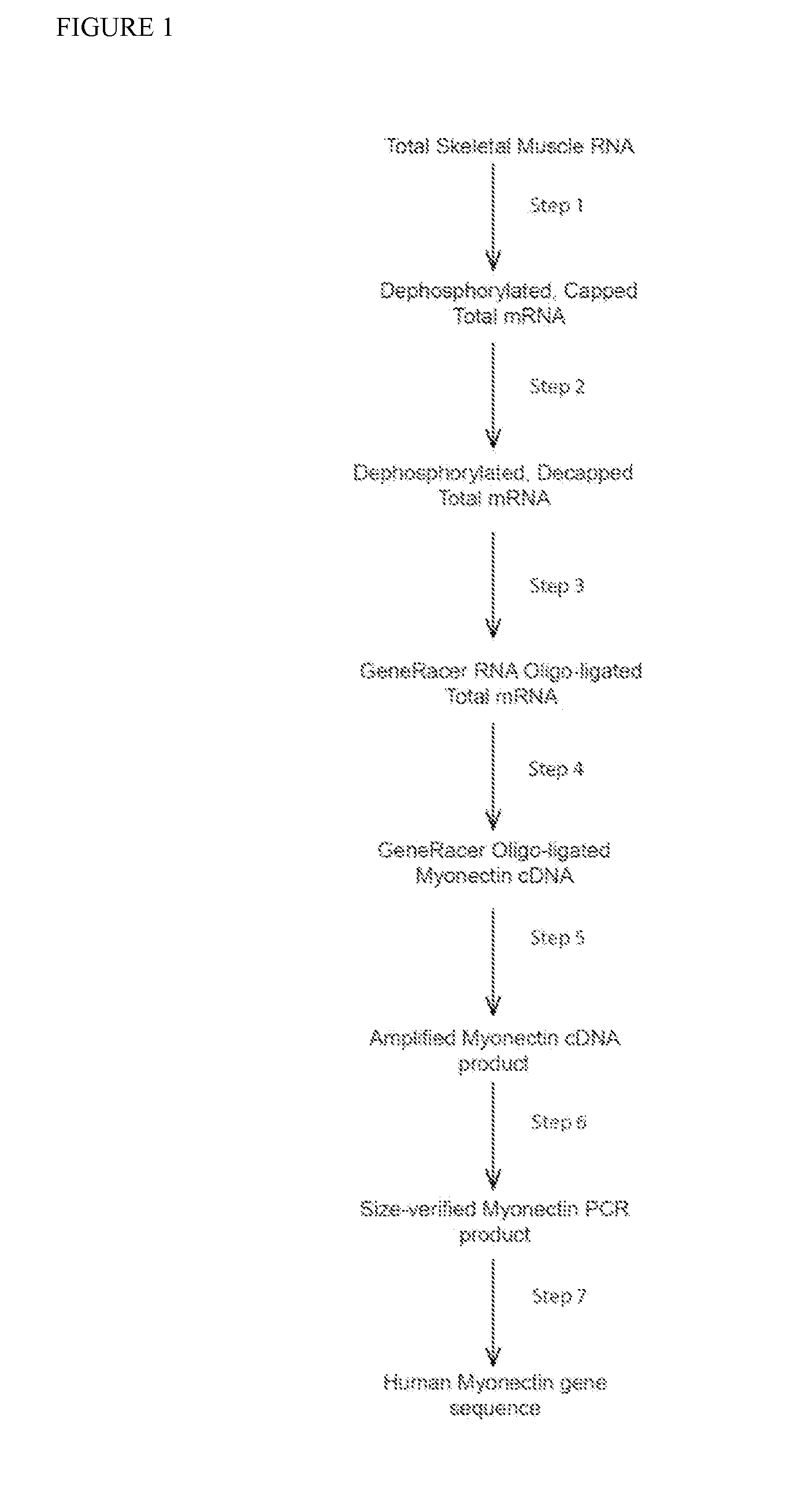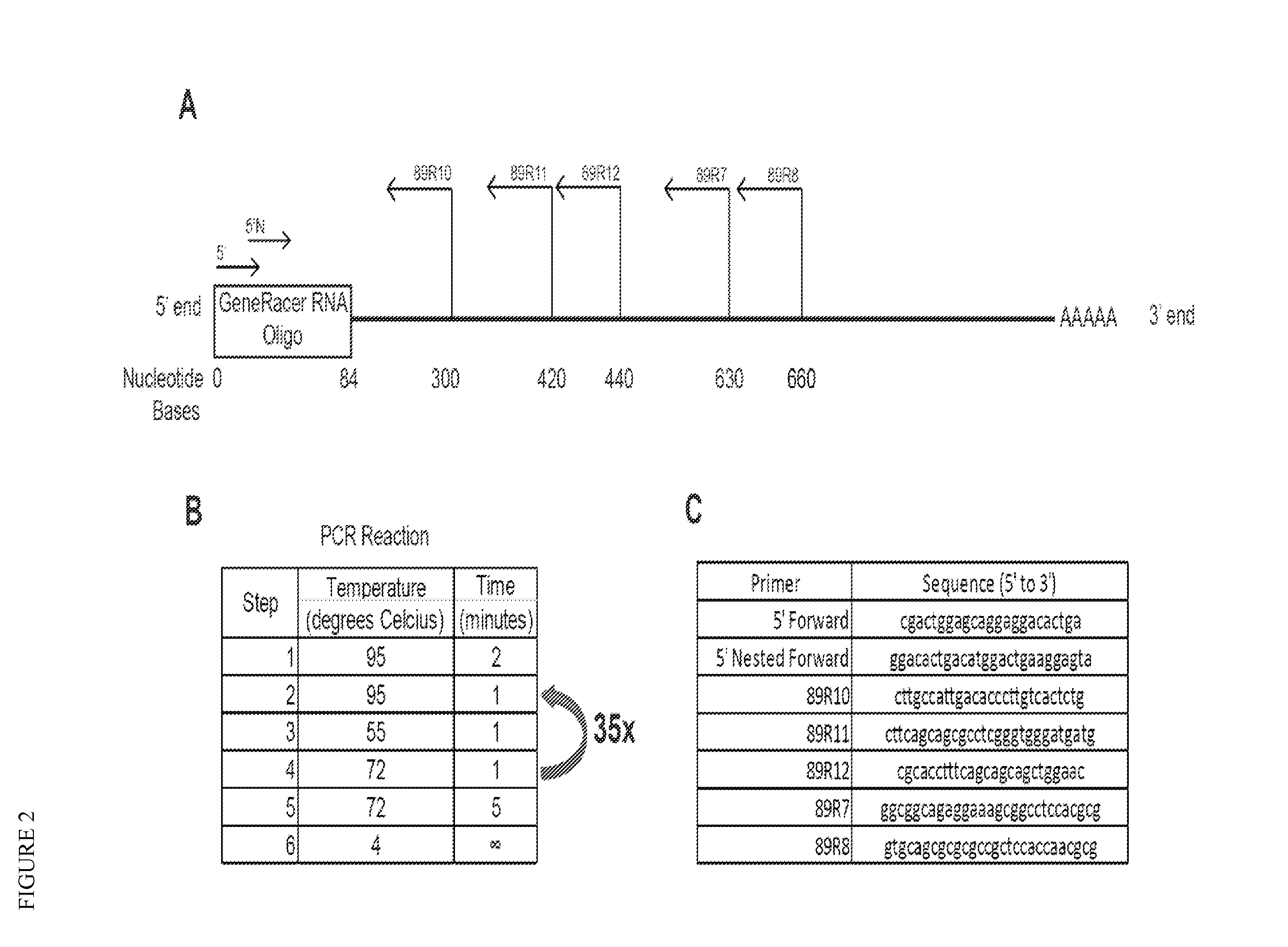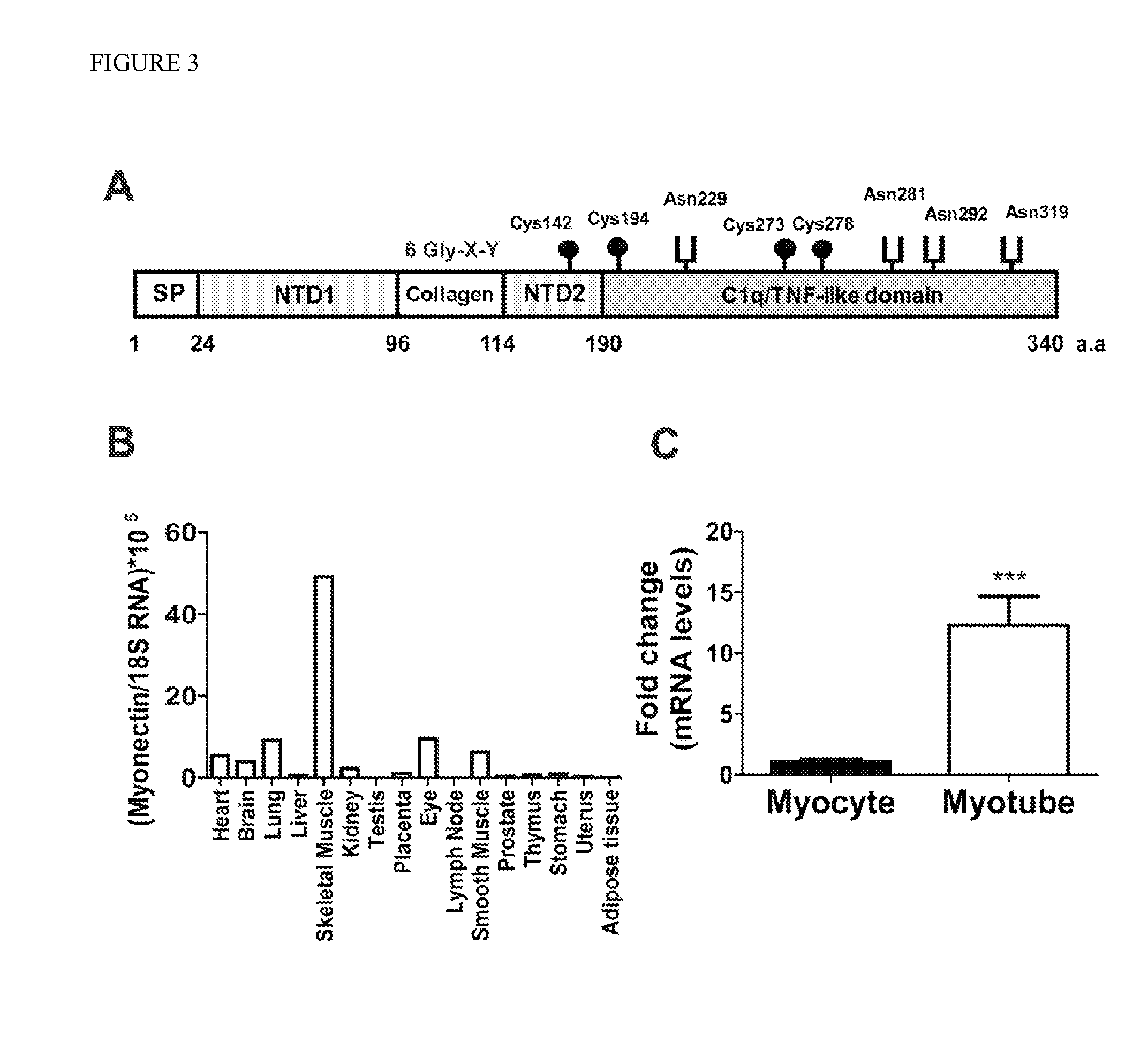Myonectin (ctrp15), compositions comprising same, and methods of use
a technology of myonectin and composition, applied in the field of myonectin (ctrp15), can solve the problems of large fat burning of muscles, and achieve the effect of reducing autophagasome formation
- Summary
- Abstract
- Description
- Claims
- Application Information
AI Technical Summary
Benefits of technology
Problems solved by technology
Method used
Image
Examples
example 1
[0113]Identification of myonectin (CTRP15) protein. A previously undescribed member of the CTRP family from mouse skeletal muscle was cloned on the basis of sequence homology shared between their C1q domains (FIG. 3A). This novel cDNA (SEQ ID NO: 1) and its encoded protein was designated myonectin (CTRP15). The deduced mouse myonectin protein (SEQ ID NO: 2) consists of five domains: a signal peptide for secretion, an N-terminal domain-1 (NTD1), a short collagen domain with 6 Gly-X-Y repeats, an N-terminal domain-2 (NTD2), and a C-terminal C1q / TNF-like domain. This protein consists of 340 amino acids and contains four Cys residues and four potential N-linked glycosylation sites that conform to the consensus sequence N-X-(Ser / Thr) (J. Biol. Chem., (2005) 280: 3121-3124). The 7.8 kb mouse myonectin gene is located on chromosome 1 (contig NC—000002.11) and contains 8 exons.
example 2
[0114]Expression of myonectin (CTRP15) protein in myotubes and skeletal muscle. In mice, myonectin transcript was predominantly expressed by skeletal muscle, with significantly lower expression in other tissues (FIG. 3B). Consistent with preferential skeletal muscle expression, myonectin was greatly induced in differentiated mouse C2C12 myotubes compared to undifferentiated myoblasts (FIG. 3C), suggesting that myonectin is produced by skeletal muscle fiber and not satellite cells. These data indicate that myonectin is a novel myokine.
example 3
[0115]Myonectin (CTRP15) protein forms disulfide-linked oligomers and heteromeric complexes with other CTRPs. Consistent with the presence of a signal peptide, myonectin was robustly secreted into the conditioned medium when expressed in vitro (FIG. 4A). Secreted myonectin contains N-linked glycans; treatment with PNGase F (an N-glycosidase) reduced the apparent molecular weight of myonectin on immunoblot (FIG. 4B), confirming that one or more of the conserved Asn residues are glycosylated. In the absence of reducing agent (β-ME), myonectin migrated as a dimer on immunoblot (FIG. 4C), indicating the presence of intermolecular disulfide bond. On a non-reducing, non-denaturing, native gel immunoblot, myonectin existed as a multimeric complex, revealing its higher-order oligomeric structure (FIG. 4D). Formation of oligomers is a biochemical feature shared by all CTRPs and proteins of the C1q family. Further, heteromeric complex formation between different CTRPs has been previously demo...
PUM
| Property | Measurement | Unit |
|---|---|---|
| pH | aaaaa | aaaaa |
| pH | aaaaa | aaaaa |
| pH | aaaaa | aaaaa |
Abstract
Description
Claims
Application Information
 Login to View More
Login to View More - R&D
- Intellectual Property
- Life Sciences
- Materials
- Tech Scout
- Unparalleled Data Quality
- Higher Quality Content
- 60% Fewer Hallucinations
Browse by: Latest US Patents, China's latest patents, Technical Efficacy Thesaurus, Application Domain, Technology Topic, Popular Technical Reports.
© 2025 PatSnap. All rights reserved.Legal|Privacy policy|Modern Slavery Act Transparency Statement|Sitemap|About US| Contact US: help@patsnap.com



